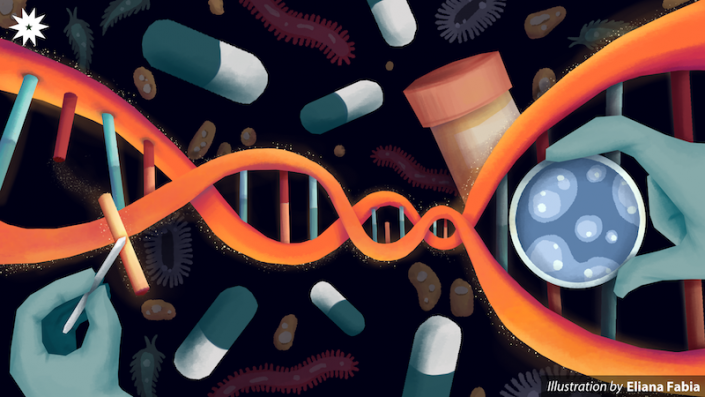DLSU Biology Department held its research webinar on bacterial genome editing, antimicrobial resistance, and resistomes last July 3 via Zoom. Aside from discussing the said scientific studies, the event, helmed by speakers Dr. Muhammad Yasir, a research biologist of Quaram Institute; Dr. Windi Muziasari, the CEO of Resistomap; and Dr. Lisa Lamberte, a research fellow of the University of Birmingham, also encouraged students to develop their own research to improve and build on pre-existing scientific knowledge.
A silent pandemic
As antibiotic-resistant bacteria become an increasing threat, biologists are searching for ways to combat it. One promising area of research looks at a bacterium’s genetic makeup to understand its ability to withstand certain drugs.
“This ability of bacteria to make itself immune to antibiotics is encoded by genes called antibiotic-resistant genes,” Muziasari prefaced.
Muziasari and Yasir explained that molecular systems called efflux pumps allow bacteria to regulate their internal toxicity levels by pumping out undesirable compounds such as antibiotics.
Yasir also mentioned that these molecular systems have the ability to share their resistance genes by jumping from the genome of one bacterium to another.
The ability of bacteria to share their resistance genes is the main problem. If there is no progress toward addressing this issue by 2050, Muziasari cautioned that “10 million deaths [will occur] per year.”

Mitigating antimicrobial resistance
To understand the genetic material of bacteria with and without antibiotic resistance, Yasir and his team of researchers developed a new technology called the Transposon Directed Insertion-site Sequencing with Expression or TraDIS-Xpress.
Yasir introduced TraDIS-Xpress as a “powerful genomic tool” that overcomes the limitations of other genetic editing methods, allowing scientists to delve into the genetic sequences of bacteria and efficiently identify essential genes responsible for their survival.
Muziasari, on the other hand, came up with a monitoring system called Resistomap that tracks the spread of antimicrobial resistance in the environment.
To demonstrate how Resistomap works, her company conducted a study on how the wastewater in hospitals, sewage systems, and the wastewater treatment plant (WWTP) influence antimicrobial resistance levels a few years back.
After months of monitoring wastewater, Resistomap showed that when antimicrobials are released into the environment, antimicrobial-resistant genes spread—not only in sewage systems but also in farmland and other surrounding areas.
“If there continues to be an increasing trend in antimicrobial resistance, we can start to do an early warning intervention to detect emergent outbreaks of antimicrobial resistance in the water or oceans we monitor,” she prompted.
The microbiota of the guts
Meanwhile, Lamberte’s experiment focused on Staphylococcus haemolyticus as a reservoir of antimicrobial resistance genes in the preterm infant gut microbiome. The end goal of her study was to know the resistance level of S. haemolyticus strains and how common these strains are among infants.
From the results of her experiment, Lamberte demonstrated how the resistance gene of S. haemolyticus was able to jump on the genome of another Staphylococcus species. This demonstrated that resistance genes can be shared between organisms of different species.
“Just because an organism possesses a resistance gene does not mean they are actually resistant to antibiotics,” she shared, referring to a nonfunctional resistance gene that she encountered in her previous experiments.
Common ground
While there is still much to explore in the field of genome editing and antimicrobial resistance, Yasir, Muziasari, and Lamberte were excited to reveal that these new technologies conferred scientists the advantage of generating high resolution genome assemblies that provide access to accurate and complete sets of data.
Although it took years of rigorous research and experience for them to get this far in the field of genetic engineering and microbiology, continuing to discover new methods that push the limitations of genome editing and antimicrobial mapping is something all three speakers are still looking forward to doing.
